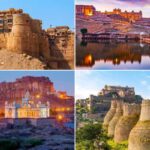6 Majestic Hill Forts of Rajasthan stand as enduring testaments to the architectural prowess and cultural legacy of the region. Scattered across the Aravalli Range in northwest India, these formidable structures reflect the rich history and strategic importance of Rajasthan. The ensemble comprises six majestic forts: Chittorgarh, Kumbhalgarh, Ranthambore, Amber, Jaisalmer, and Gagron, each distinctive in design and historical significance.
Constructed between the 5th and 19th centuries, these forts served as centers of power, offering protection, housing royalty, and facilitating governance. The intricate fortifications, intricate palaces, temples, and other structures within the forts exemplify the craftsmanship and engineering brilliance of their builders.
Chittorgarh, an emblem of Rajput valor and sacrifice; Kumbhalgarh, famed for its massive walls and intricate architecture; Amber, an amalgamation of Hindu and Mughal influences; Jaisalmer, a golden-hued desert citadel; Ranthambore, blending nature with fortifications; and Gagron, surrounded by rivers, each narrates a unique tale of heritage and resilience.
Designated as UNESCO World Heritage Sites in 2013, the Hill Forts of Rajasthan attract visitors worldwide, offering glimpses into a bygone era and showcasing the enduring legacy of Rajasthan’s architectural marvels, cultural heritage, and historical significance.
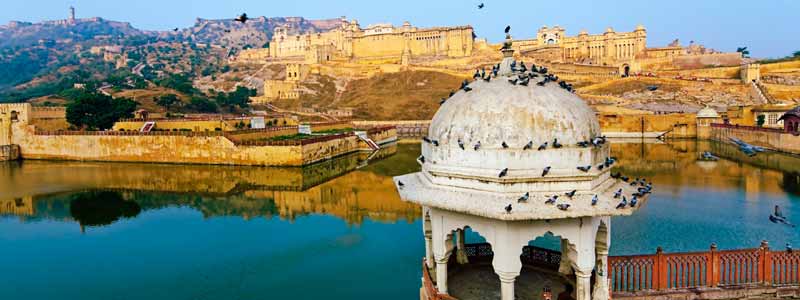
Amber Fort (Amer Fort):
The Amber Fort, situated in Jaipur, Rajasthan, is a captivating blend of Rajput and Mughal architectural styles, standing as a testament to the region’s rich history and cultural grandeur. Perched majestically on a hill, the fort overlooks Maota Lake, creating a picturesque setting that enchants visitors.
Constructed in the 16th century by Raja Man Singh I, the fort boasts magnificent structures like the Diwan-e-Aam (Hall of Public Audience), Diwan-e-Khas (Hall of Private Audience), Sheesh Mahal (Mirror Palace), and the Ganesh Pol (Ganesh Gate), each showcasing intricate craftsmanship and artistic brilliance.
The fort’s sturdy walls, bastions, and imposing gates reflect the strategic brilliance of its design, providing both protection and aesthetic appeal. Its blend of red sandstone and marble, along with ornate carvings and frescoes, creates a mesmerizing visual spectacle.
One of the highlights of visiting the Amber Fort is the experience of riding on an elephant up the steep slope to its entrance, a tradition that adds a touch of regal charm to the visit.
A UNESCO World Heritage Site, the Amber Fort stands as a timeless symbol of Jaipur’s architectural splendor, drawing in tourists from around the world to witness its historical grandeur and artistic finesse.
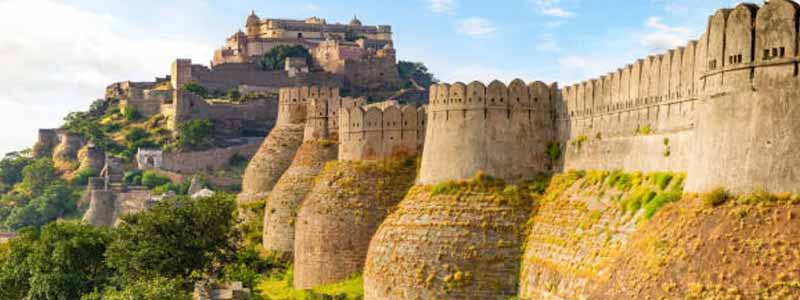
Kumbhalgarh Fort:
Kumbhalgarh Fort, nestled amidst the Aravalli hills in the Rajsamand district of Rajasthan, India, stands as an architectural marvel and a testament to the region’s rich heritage. Constructed in the 15th century by Rana Kumbha, a Rajput ruler of Mewar, this imposing fortress is renowned for several distinguishing features, the most notable being its extensive wall, often referred to as the “Great Wall of India.”
Spanning over 36 kilometers, the wall of Kumbhalgarh is the second-longest continuous wall in the world, only surpassed by the Great Wall of China. The fort’s robust defenses and the intricate architecture within its precincts highlight the strategic and aesthetic brilliance of its builders.
The fort complex houses over 360 temples, including the famous Badal Mahal (Palace of Clouds) adorned with vibrant murals, the Kumbha Palace showcasing intricate craftsmanship, and several other structures reflecting the fusion of Rajput and Mughal architectural styles.
Perched atop a hill, Kumbhalgarh Fort offers panoramic vistas of the surrounding countryside, making it not just a historical marvel but also a visual treat for visitors. Its recognition as a UNESCO World Heritage Site adds to its allure, attracting tourists and history enthusiasts from around the globe, eager to explore its rich history and grandeur.
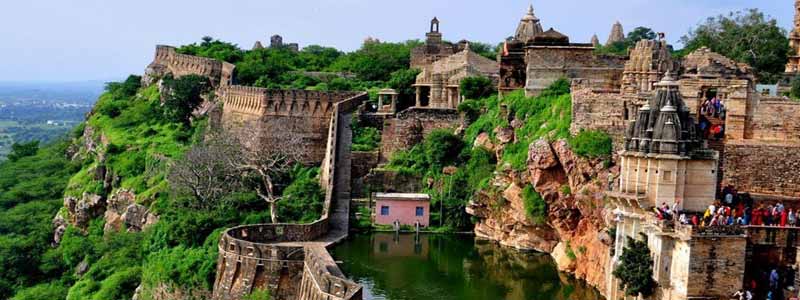
Chittorgarh Fort:
Chittorgarh Fort, situated in the state of Rajasthan, India, stands as a symbol of valor, sacrifice, and resilience. This colossal fort, perched atop a hill about 590 feet high, spans an area of approximately 700 acres, making it one of the largest forts in India. Its strategic location provided a vantage point for defense and governance.
Constructed in the 7th century AD by the Maurya dynasty, Chittorgarh Fort witnessed numerous battles and sieges throughout its history. The fort comprises magnificent palaces, temples, towers, and reservoirs, each reflecting the architectural brilliance of its time. The Vijay Stambha (Tower of Victory) and Kirti Stambha (Tower of Fame) are iconic structures within its precincts, 6 Majestic Hill Forts of Rajasthan.
Chittorgarh Fort is steeped in legends of sacrifice, notably the tale of Rani Padmini’s jauhar (self-immolation) to protect honor from invasions. This act of bravery and sacrifice epitomizes the indomitable spirit of Rajputana.
Recognized as a UNESCO World Heritage Site, Chittorgarh Fort remains a significant historical and cultural emblem, drawing tourists and history enthusiasts worldwide to witness its grandeur, learn about its storied past, and pay homage to the valorous tales enshrined within its walls.
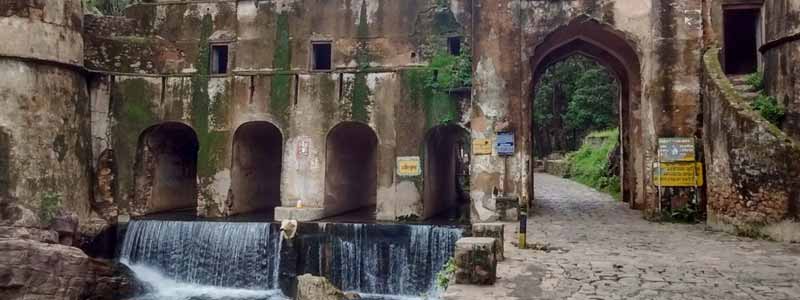
Ranthambore Fort:
Ranthambore Fort, perched majestically atop a rocky outcrop in the heart of the Ranthambore National Park in Rajasthan, India, is a formidable structure steeped in history and natural beauty. Dating back to the 10th century, this ancient fortification stands as a testament to the region’s rich heritage and strategic significance, 6 Majestic Hill Forts of Rajasthan.
Initially built by the Chauhan Rajput king, Sapaldaksha, the fort underwent expansions and renovations under various rulers, including the Mughals. Its strategic location atop a hill afforded commanding views of the surrounding landscapes, making it an impregnable bastion in its prime.
The fort is a blend of Rajput and Mughal architectural styles, featuring imposing gates, temples, palaces, and reservoirs. The Ganesha Temple, dedicated to Lord Ganesha, and the majestic Hammir Court are among its notable structures. Its sprawling premises also house a 13th-century mosque, adding to the fort’s diverse historical influences.
Apart from its historical significance, Ranthambore Fort offers breathtaking panoramic views of the National Park, known worldwide for its population of Bengal tigers and diverse wildlife. The fusion of history and nature at Ranthambore Fort makes it a coveted destination for history enthusiasts, nature lovers, and tourists seeking a blend of cultural heritage and natural wonders in a single visit.
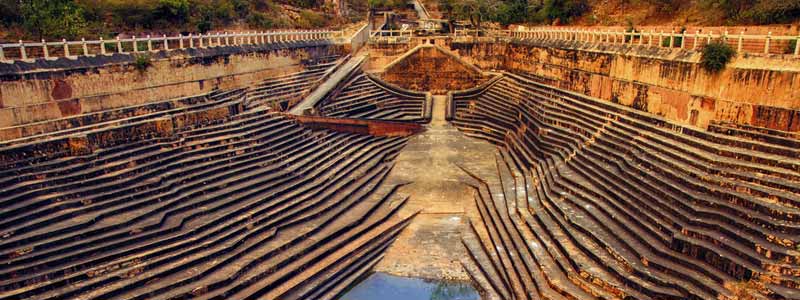
Nahargarh Fort:
Nahargarh Fort, perched atop the rugged Aravalli hills overlooking the Pink City of Jaipur in Rajasthan, India, stands as a testament to the architectural prowess and historical significance of the region. Built in the 18th century by Maharaja Sawai Jai Singh II, this impressive fortification was initially designed as a retreat and defensive stronghold.
The fort’s name, Nahargarh, translates to “abode of tigers,” attributed to the belief that it was haunted by the spirit of Nahar Singh Bhomia, a Rathore prince whose spirit was said to have disrupted the initial construction, leading to rituals seeking his appeasement, 6 Majestic Hill Forts of Rajasthan.
Featuring stunning bastions, intricate architecture, and breathtaking panoramic views of Jaipur, Nahargarh Fort served as a retreat for the royal family. Its design combines both Indian and European architectural styles, boasting beautiful palaces, intricately designed chambers, and sprawling courtyards.
The fort’s strategic location offers mesmerizing vistas, especially during sunset when the city below is bathed in a warm, golden hue. Today, Nahargarh Fort stands as a popular tourist destination, drawing history enthusiasts, architecture aficionados, and tourists seeking panoramic views and a glimpse into Rajasthan’s regal past. Its well-preserved structures and captivating allure continue to captivate visitors, adding to the rich tapestry of Jaipur’s cultural heritage.
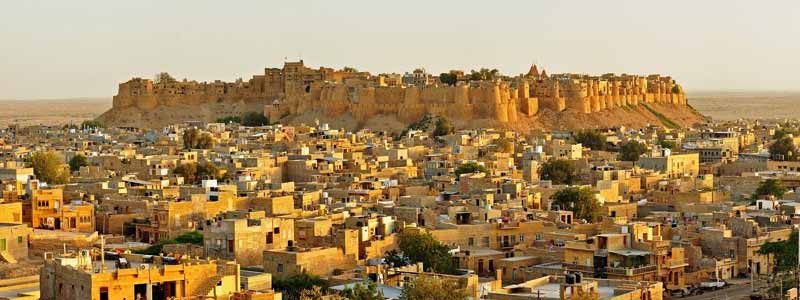
Jaisalmer Fort:
Rising majestically from the Thar Desert in Rajasthan, India, Jaisalmer Fort stands as a golden sentinel, a living embodiment of architectural splendor and cultural richness. This UNESCO World Heritage Site is one of the largest fully preserved fortified cities in the world and a prime example of Rajputana architecture.
Constructed in 1156 AD by Maharawal Jaisal Singh, the fort is crafted entirely from yellow sandstone, earning it the moniker “Sonar Quila” or Golden Fort due to its distinct golden hue that shimmers under the desert sun. Encircled by imposing walls and bastions, the fort houses exquisite palaces, intricately carved Jain temples, havelis (traditional mansions), and winding narrow lanes that exude an old-world charm.
The fort served not just as a defensive stronghold but also as a thriving urban center with markets, residences, and religious buildings nestled within its walls. The Rajput and Islamic architectural influences are evident in its structures, notably in the splendid craftsmanship seen in the detailed facades and ornate designs.
Even today, Jaisalmer Fort continues to be inhabited by locals, offering a unique glimpse into a vibrant living heritage site. Its timeless allure and architectural brilliance attract visitors worldwide, drawing them into an enchanting journey through Rajasthan’s history and cultural tapestry 6 Majestic Hill Forts of Rajasthan.





